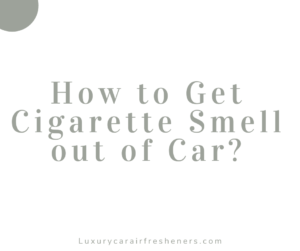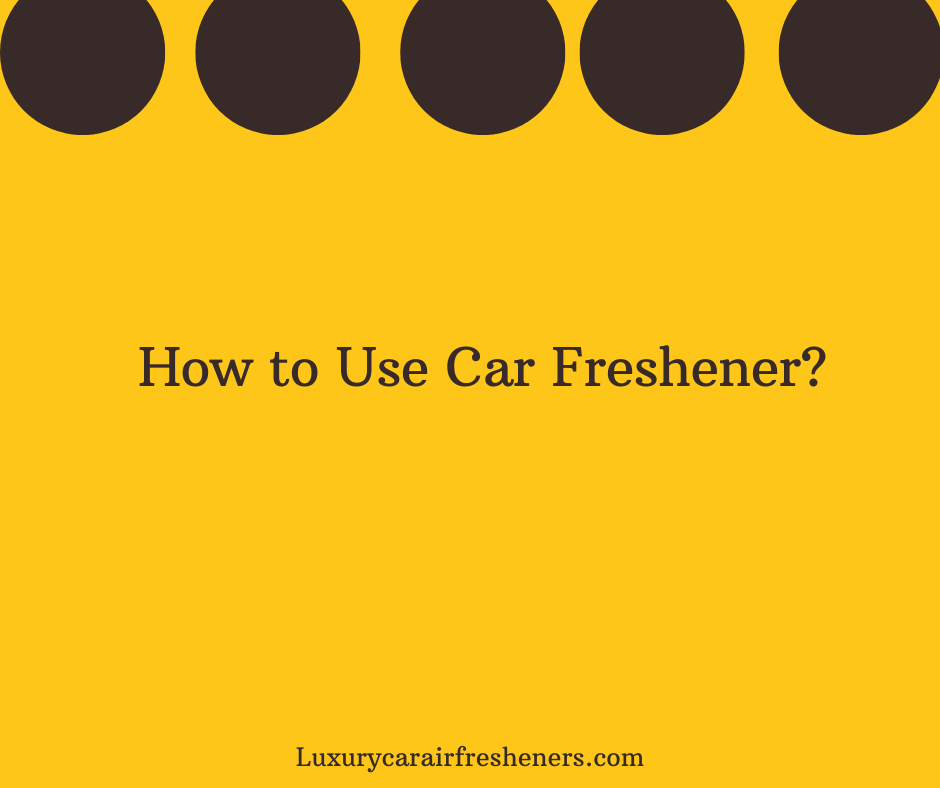How to Get Cigarette Smell Out of Your Car: A Pro-Level Guide
There are few odors as persistent and invasive as stale cigarette smoke. Whether you’ve just bought a used car that was owned by a heavy smoker, or you’re a former smoker looking for a fresh start, that lingering smell of a dirty ashtray is a formidable foe. It clings to every surface, permeates every fiber, and can turn an otherwise pleasant drive into a headache-inducing experience.
As someone who has detailed cars and restored more than a few “smoker’s specials” back to life, I can tell you this: it’s a battle, but it’s a battle you can absolutely win. The mistake most people make is trying to mask the smell with a pine tree air freshener. That’s like using a band-aid on a broken leg. To truly eliminate cigarette odor, you need to declare all-out war. This is your definitive battle plan.
Why is Cigarette Smoke So Hard to Remove?
Before we dive into the “how,” it’s crucial to understand the “why.” Cigarette smoke isn’t just a smell; it’s a physical substance. When a cigarette burns, it releases thousands of chemicals, including tar and resins. This creates a sticky, oily aerosol that coats every single surface it touches.
- It’s an Oily Resin: Unlike dry dust, this tarry film bonds with surfaces, making it difficult to wipe away.
- It’s Microscopic: Smoke particles are tiny enough to penetrate deep into porous materials like seat foam, carpets, headliners, and even the plastics of your dashboard.
- It Contaminates the HVAC System: Your car’s ventilation system inhales the smoke-filled air, coating the internal ductwork and evaporator with that same sticky residue. Every time you turn on the fan, you’re re-introducing the smell.
Simply put, you can’t just deodorize the air. You have to physically remove the oily source of the smell from every surface in the car.
Your Toolkit for Total Odor Annihilation
Winning this fight requires the right weapons. Forget the household sprays; we’re bringing in the professional-grade gear. Here’s what your arsenal should look like, with my top picks available on Amazon.

1. Deep Cleaning Upholstery Shampoo
A high-foaming spray that gets deep into fabric fibers to loosen and lift tar and nicotine stains.
Check Price on Amazon
2. All-Purpose Cleaner (APC)
Essential for wiping down every hard surface—dashboard, door panels, steering wheel—to remove the sticky tar film.
Check Price on Amazon
3. Odor Eliminator Fogger/Bomb
A crucial step for clearing out the HVAC system and neutralizing any remaining airborne particles.
Check Price on Amazon
4. Ozone Generator (The Nuclear Option)
For severe, set-in odors, ozone is the ultimate weapon. It uses an electrical charge to destroy odor molecules at their source.
Check Price on AmazonThe Deep Clean: A Step-by-Step Guide to Reclaiming Your Car
Alright, let’s get to work. This isn’t a 20-minute job. Set aside a full afternoon. The more thorough you are, the better your results will be. Follow these steps in order.
-
The Great Purge & Dry Pass
Remove everything from the car that isn’t bolted down: floor mats, trash, personal items, junk in the glove box. Then, perform the most thorough vacuuming of your life. Use the crevice tool along every seam, under the seats, and between the cushions. Use the brush attachment on all fabric and carpet to agitate and lift particles. -
Hard Surface Decontamination
Spray your All-Purpose Cleaner (APC) onto a microfiber towel (not directly onto surfaces) and wipe down every single hard surface: dashboard, center console, steering wheel, shift knob, door panels, pillars, and even the rearview mirror. You will likely see a disturbing yellow-brown residue on your towel. This is the nicotine and tar film. Keep wiping with clean sections of the towel until it comes away clean. -
Soft Surface Extraction (The Main Event)
This is where you’ll make the biggest impact. Spray your upholstery cleaner generously on a section of the carpet or a seat. Use a stiff brush to scrub vigorously, working the cleaner into a foam. Then, use a wet/dry vac or a dedicated carpet extractor to suck up the dirty foam. If you don’t have an extractor, blot fiercely with clean, dry microfiber towels. Repeat for all seats, carpets, and floor mats. Do not forget the headliner! The headliner is a smoke magnet. Spray cleaner onto a towel and gently blot it; do not oversaturate or scrub aggressively, as this can damage the adhesive. -
The Hidden Grime on Glass
That oily smoke film coats the inside of your windows, too. Use a high-quality glass cleaner and two towels—one to apply and one to buff dry. Clean every interior glass surface until it’s streak-free. You’ll be amazed at the clarity and how much haze was blocking your view. -
The HVAC System Purge
This is a non-negotiable step. The smell will return if you skip this. First, locate and replace your cabin air filter. The old one is likely black and saturated with odor. With the new filter installed, start the car, turn the AC on full blast, and make sure it’s set to “recirculate” air. Now, activate your odor eliminator fogger/bomb as directed on the can. Place it in the center of the car, close all the doors, and let it run for the specified time (usually 15-20 minutes). The fog will be sucked into the recirculation intake and circulate through the entire HVAC system, neutralizing odors deep inside. -
Airing Out
After the fogger is done, open all the doors and let the car air out for at least an hour to clear out the chemical smell and allow all the surfaces to dry completely.
For Extreme Odors: The Ozone Generator Treatment
If you’ve followed all the steps above and still have a stubborn, lingering odor (common in cars smoked in for years), it’s time to bring out the ultimate weapon: an ozone generator. Ozone (O3) is an unstable molecule that attacks and oxidizes organic molecules, including those that cause odors.
Here’s how to safely perform an ozone treatment:
- Ensure the car’s interior is completely clean and dry from the steps above.
- Place the ozone generator inside the car, typically on the floor or a seat.
- Run the power cord out through a slightly cracked window (use a towel to seal the gap as much as possible).
- Turn the car’s fan on to a low or medium setting on recirculate to help distribute the ozone.
- Set the generator’s timer for 30-60 minutes for a standard treatment. For “nuclear” level odors, you may need up to 2-4 hours.
- Once the timer is finished, turn off the machine and open all the car doors. Let the vehicle air out for a minimum of two hours, preferably longer, to allow the ozone to dissipate and revert to breathable oxygen (O2). The car will have a sterile, almost bleach-like smell which will fade over a day or two.
Keeping Your Car Smelling Great for Good
You’ve won the war. Now it’s time for peacekeeping. The number one rule is obvious: stop smoking in the car. But beyond that, you can maintain that fresh, neutral canvas you’ve worked so hard to create.
Now that the bad smell is truly gone, you can introduce a pleasant one. This is where air fresheners finally have a role to play—not as a mask, but as an enhancement. Our definitive guide on the best car air fresheners for smokers highlights options with powerful odor-neutralizing properties that are perfect for maintaining a clean slate. These are designed to tackle tough odors, making them excellent for preventing any future funk from taking hold.
To keep things consistent, it helps to know how often you’ll need to swap them out. Wondering how long do car air fresheners last? Our detailed analysis can help you choose a long-lasting option so you can set it and forget it. If you’d rather maintain the neutral smell without adding a new fragrance, consider natural options like bamboo charcoal bags, which are featured in our main guide to what are the best car air fresheners.
Frequently Asked Questions
Q: I tried a spray from the auto store and the smell came back. Why?
A: Most over-the-counter sprays are just perfumes that temporarily mask odors. They don’t remove the underlying source—the tar and resin film coating your interior. Once the perfume fades, the original smell returns. You must physically clean the surfaces.
Q: Can I just use household cleaners like vinegar or baking soda?
A: While vinegar can help neutralize odors and baking soda can absorb them, they are typically not strong enough to break down the heavy, oily tar residue from years of smoking. They might help with a very light, recent odor, but for set-in smells, you need automotive-specific cleaners designed for the job.
Q: The smell came back after a few hot days. What did I miss?
A: Heat can cause remaining tar and nicotine residue to “gas off,” re-releasing the odor. If this happens, you likely missed a spot. The most common culprits are the headliner and the HVAC system. Re-cleaning the headliner and running a second odor fogger through the vents will usually solve it.
Breathe Easy: Enjoy Your Fresh-Start Vehicle
Getting rid of set-in cigarette smell is a marathon, not a sprint. But by following this comprehensive plan—from deep cleaning every surface to purging the HVAC system—you can permanently eradicate the odor and reclaim your car. The satisfaction of stepping into a genuinely clean and fresh-smelling vehicle that you restored yourself is well worth the effort.


